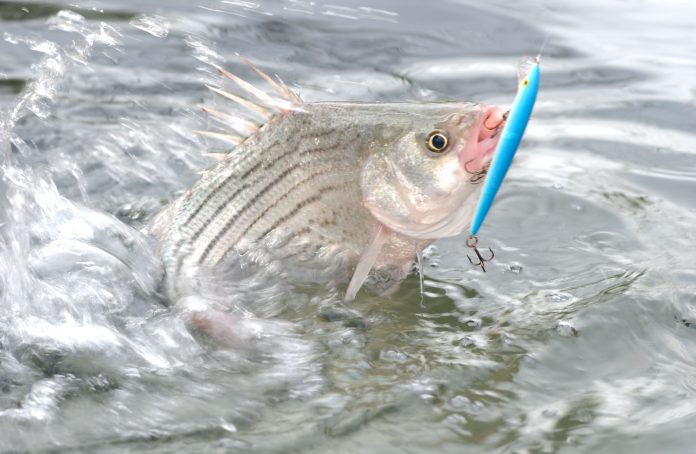
As St. Patrick and Mother Nature begin rolling out the green, runners of all types will take to sidewalks, dash along in organized races, down park trails and through the rivers and streams to help launch spring’s rebirth.
Rivers, you say? Wouldn’t that be called swimming and not running? Yes, I did — and it ends up being both! The most significant spring runs are centuries old and take place in many of Ohio’s streams and rivers. These are the spawning runs of several different fish species as they leave their wintering waters and proceed to historically crucial spawning areas.
In the mid-1800s, there was a genuine fear that Ohio would lose all of its native wild fish in its streams and rivers. There was no EPA or Clean Water Act to protect these waterways; it was left up to good sense and the still developing ecological sciences.
Toss in some big bucks being saved and the lack of laws, many industries — including home sewage — found the most expedient ways to ditch their dirty water was into ditches, streams and rivers. Add to that the hundreds of small dams erected to run grist and sawmills, and other businesses that benefited from harnessing the power of water and fish were left stranded without the ability to migrate to cleaner waters or important spawning areas.
The warnings from 19th-century scientists and budding ecologists warned that soon, stream and river fish might be taken off of every family’s menu because they’d be extinct. That put Ohio’s General Assembly into motion. In 1873, they created the Ohio Fish Commission which would later evolve into the Division of Wildlife we know today.
Thankfully, that meager beginning, coupled with the social awakening of the concepts of conservation and a budding understanding of industrial, agricultural and personal impacts on the environment, has turned most of those early issues around.
Ohio river fish. So, what fish are best known for running up Ohio’s rivers? Likely the most celebrated is the walleyes’ spring trip, especially up the Maumee and Sandusky rivers in northwest Ohio. The epic angling opportunities provided by those runs draw anglers like honeybees to daffodils.
Beginning mid-March and lasting till about the first week of April, fishers will drive from every neighboring state to spend time wading the rivers or bouncing above Lake Erie’s reefs in the hopes of catching Ohio’s state fish. Most go home toting a heavy cooler, though less scrupulous individuals might take a detour to the courthouse for not following the special regulations that are in place during these runs. Some might say “live and learn,” but experience tells me that there will always be a few scoundrels in need of repeat lessons.
Besides the celebrated walleye, what other Ohio fish make spring trips to spawning areas? Let’s examine just a few that might give you a little extra ambition to buy your fishing license:
Steelhead. These lake-running rainbows grow up to become some hard-headed fighters that are especially fun on fly and spin tackle. Late winter and early spring will find them in Ohio’s Steelhead Alley: Rocky River, Grand River, Chagrin River, Vermilion River and Conneaut Creek. Studies indicate that nearly 80% of all Ohio steelhead are caught in these streams. They can be finnicky, careful and shy, but when one connects, it’s a story that will hang on for years — whether you landed it or not.
White bass. These fish can be expected to begin their Maumee and Sandusky spawning runs in early April, the tail end of the walleye run. Easy to catch, most experienced anglers put keepers on ice immediately. My time fishing the Sandusky with a Mepps spinner really put my ultra-light rod to the test. They’ll also run into some smaller rivers, and reservoir white bass will move within easy casting distance. My once favorite combination was a Browning Silaflex rod and Quick reel, and I still have them.
Suckers. Say what you want, but these fish are just plain fun. They’ll slip out of lakes and rivers to head up smaller streams during the spring spawn. They’re quite catchable, and in my younger days, I spent hours along Columbiana County’s Beaver Creek with a Daiwa 7-weight fly rod (my first) and weighted redworm imitations. Sometimes, strangely horned, spring-running hornyhead “bull” chubs and creek chubs would take the bait. I didn’t care, I released them all anyway. Occasionally, the bonus of an angry smallmouth exploding into indignant, airborne antics to try to shake free would bring a real smile. Today, even the memory is enough!
Largemouth Bass. While not thought of as a “migratory” fish, they do move into shallow water during the spring spawning season. Once their nest is built, they get a bit ill-tempered with bluegills and other egg-snatchers trying to rob their nest. This makes them susceptible to the hook, but it’s best to put them right back in the water. Unprotected bass eggs seldom get the chance to produce. Ditto for smallmouth bass.
Crappies. These fish tend to move into shallow water during early spring spawning. They love to terrorize small minnows and that voracious appetite can lead to an ice chest of fillets. On one memorable evening, my dad, brother and I managed to catch more than 100 keeper-sized fish. We were using a small white fly with a silver propeller on its nose trailing behind clear casting bobber tossed with our spinning gear. We only kept 25, but just because we’d caught what we needed didn’t mean we had to stop having fun.
Carp. Stocked in the late 1800s as a food source, these bruisers are referred to as “rough fish.” I don’t necessarily agree with that term unless it’s referring to this muscle-head when it’s hooked, and then it’s both rough and tough. Seeing them sift through the bottom mud, nosing around stones and vegetation gives you a hint that they aren’t eating mud like your great granddaddy told you. Like suckers, they’re using their vacuum snozzle to look for aquatic insects and worms. Using doughball concoctions and bug imitations will introduce you to one of the most belligerent fish you’ll tangle with in Ohio’s streams. Bowfishing is also popular.
The fact is that most fish in Ohio alter their “routine” to adjust to spring spawning urges. Some move to shallow waters and some from rivers and lakes to travel up streams. While many anglers buy their fishing license to take advantage of putting a few fillets in the freezer, there are those that just enjoy catching the fish and then releasing them for another day. There’s certainly merit in both, and I probably count myself primarily in the latter.
The important thing is to make every trip its own adventure. Pay attention to the birds, to what swims by, to the way the stream murmurs to the stones and trees. You may well come home with more to remember than just fish stories — and realize that the water was also whispering to you.
“Adopt the pace of nature. Her secret is patience.”
— Ralph Waldo Emerson












